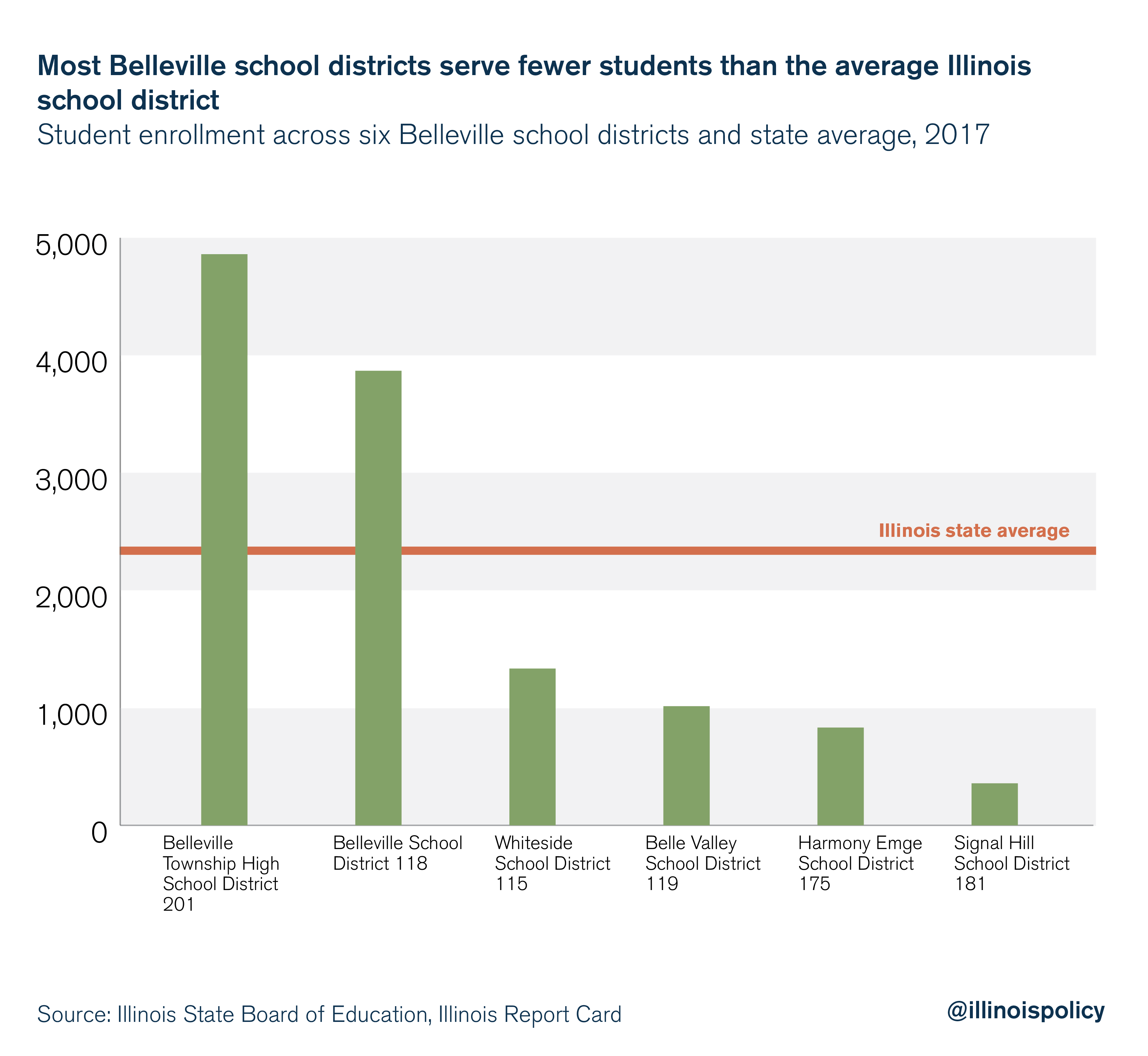One reason for Illinoisans’ daunting property tax bills is the sheer number of local governments in their state. The Land of Lincoln is home to nearly 7,000 units of government, the highest count in the nation, which often perform overlapping or duplicative services.
This trend holds for Illinois school districts, where taxpayers are funneling too much money to administrative payrolls at more than 850 districts, rather than to the classroom. In Illinois’ Metro East region, the city of Belleville offers one example of costly administrative duplication.
Consolidation of school districts – not schools – could result in serious savings for Belleville taxpayers without jeopardizing the quality of education.
Belleville has six school districts, each with their own costly administrative bodies – dozens of administrators across the six districts are taking home six-figure compensation each year. And most of those districts are serving fewer students than the average Illinois school district.
The average Illinois school district serves about 2,400 students, which stood as the fifth-lowest among states with over 1 million students as of 2015. Belleville School District 118 and Belleville Township High School 201 both serve more students than the average Illinois school district, with enrollment totaling 3,870 and 4,860, respectively.
But most local districts’ enrollment figures fall far below the state average. Whiteside School District 115 and Belle Valley School District 119 serve 1,330 and 1,000 students, respectively. Harmony Emge School District 175 and Signal Hill School District 181 serve just 830 and 355, respectively.

The number of schools served by most Belleville school districts is also notably small. Only one school district in Belleville serves more than three schools: District 118, which serves 10 schools. At the other end of the scale, two districts – Districts 119 and 181 – serve only one school.
Belleville’s three remaining districts also trend small. District 175 serves three schools, while District 201 and District 115 both serve only two. All told, five of Belleville’s six school districts serve three schools or fewer.
Were Belleville to consolidate its four smallest districts into one, the resulting school district would still be smaller than Districts 118 and 201, overseeing fewer students and schools. District consolidation – which could take a variety of different forms – could free up funds that could be rerouted toward classrooms or returned to taxpayers. In all, the six districts house 50 administrators who each make more than $100,000 in total compensation.
The cost of government in Illinois has climbed past what many taxpayers are able to afford. And as rising property taxes continue to eat into household budgets, cash-strapped Illinoisans increasingly find themselves squeezed out of state.
But by reducing needlessly overlapping and gratuitous units of government, the cost of government in Illinois could be brought closer in line with what taxpayers can afford. For Belleville taxpayers, in particular, one feasible solution might be found in its six layers of school districts.